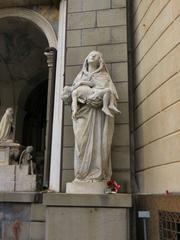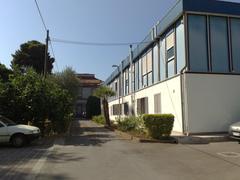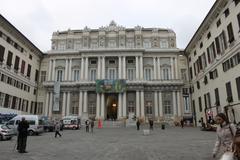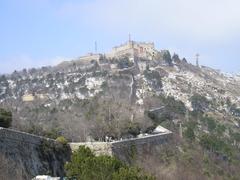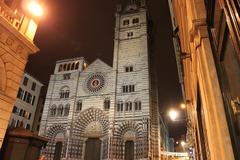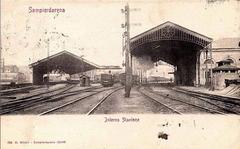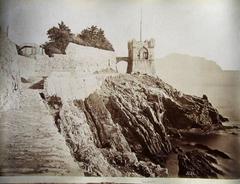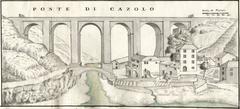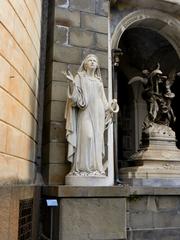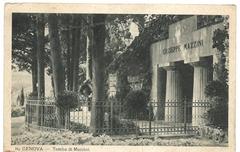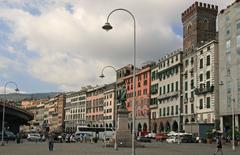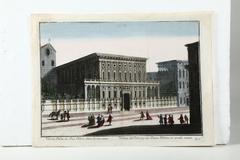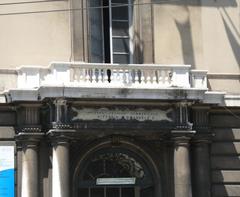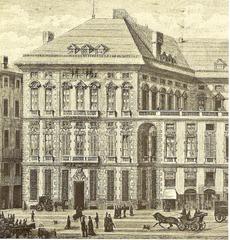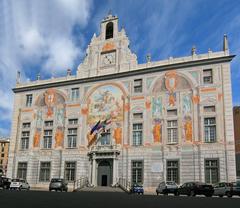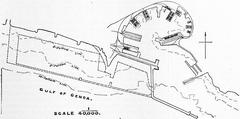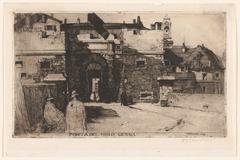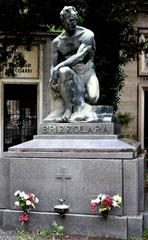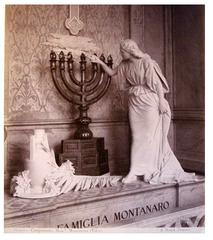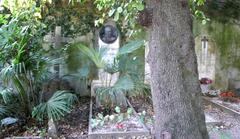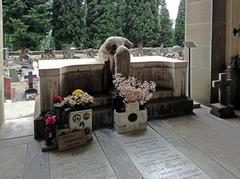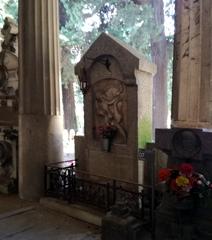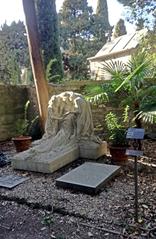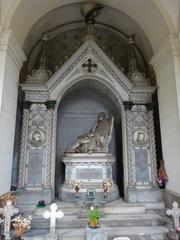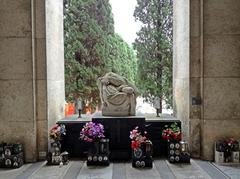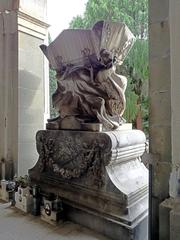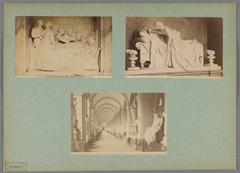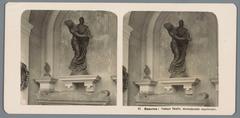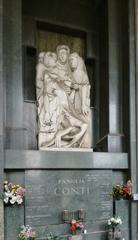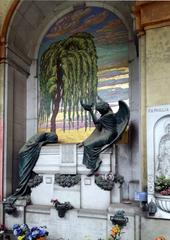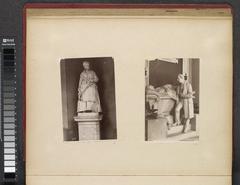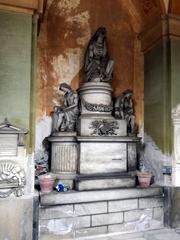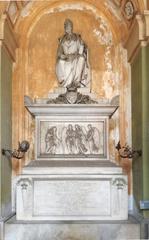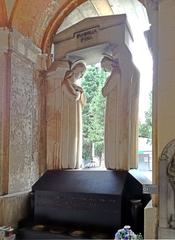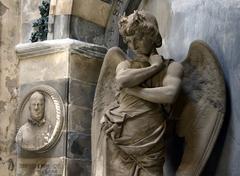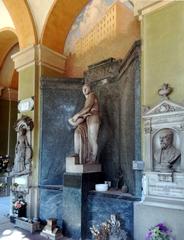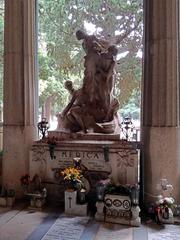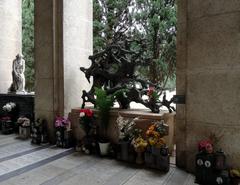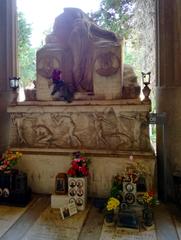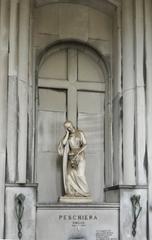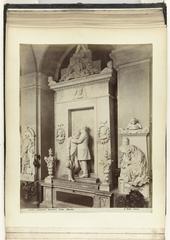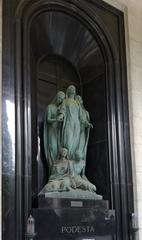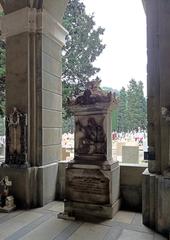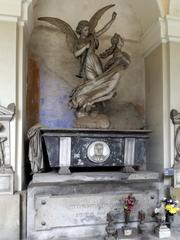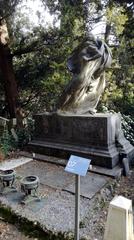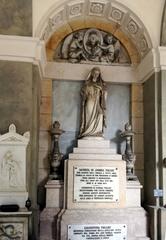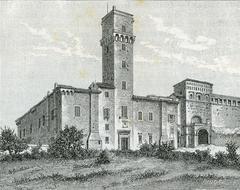Visiting Porta Soprana: Hours, Tickets, and Historical Sites in Genoa
Date: 18/08/2024
Introduction
Porta Soprana, also known as Porta di Sant’Andrea, stands as one of Genoa, Italy’s most iconic and historically significant landmarks. Constructed around 1150 as part of the Barbarossa walls, this majestic gate was instrumental in fortifying the city against invasions and asserting Genoa’s dominance in the Mediterranean region. The imposing twin circular towers and Romanesque style of Porta Soprana are a testament to the architectural prowess and strategic military planning of the medieval period (Musei di Genova). Situated in the heart of Genoa’s old city, Porta Soprana not only offers a glimpse into the past but also stands as a cultural icon, inspiring various artistic and literary works over the centuries. This comprehensive guide aims to provide detailed insights into the gate’s historical background, architectural features, and practical visitor information, ensuring a well-rounded and enriching experience for anyone planning to explore this remarkable monument.
Table of Contents
- Introduction
- Historical Background
- Cultural Impact
- Visitor Experience
- Visitor Information
- Travel Tips
- Accessibility
- FAQ
- Conclusion
Historical Background
Origins and Construction
Porta Soprana was constructed around 1150 as part of the Barbarossa walls, named after the Holy Roman Emperor Frederick Barbarossa. These walls were built to fortify the city against potential invasions and to assert Genoa’s growing power and influence in the Mediterranean region. The gate’s construction is a testament to the medieval architectural prowess and strategic military planning of the time.
Architectural Features
Porta Soprana is characterized by its imposing twin circular towers, which are a distinctive feature of Genoese medieval architecture. The gate’s design reflects the Romanesque style, prevalent during the 12th century, with its robust stone construction and minimalistic decorative elements. The towers were designed to provide a vantage point for defenders, allowing them to monitor and repel any approaching threats.
Restoration Efforts
Over the centuries, Porta Soprana underwent several phases of restoration to preserve its historical and architectural integrity. Major restoration efforts were carried out between the 19th and 20th centuries, aiming to restore the gate to its original appearance from the time of the Barbarossa walls’ construction. These efforts involved meticulous research and the use of traditional building techniques to ensure authenticity.
Historical Significance
Porta Soprana holds immense historical significance as a symbol of Genoa’s medieval past and its strategic importance in the Mediterranean. The gate was part of a larger defensive system that included other gates, such as Porta dei Vacca, which also featured circular towers. These gates and walls played a crucial role in protecting the city from invasions and maintaining its autonomy.
Nearby Historical Sites
Porta Soprana is located in the heart of Genoa’s old city, surrounded by numerous other historical landmarks. Just a short distance away is the Casa di Colombo, a reconstruction of the house believed to be the birthplace of the famous navigator Christopher Columbus. Visitors can also explore the Palazzo della Borsa, a stunning example of early 20th-century architecture that once served as the city’s stock exchange. Another nearby attraction is the Chiesa del Gesù, a former Jesuit church dating back to 1597, known for its intricate and lavish interior.
Cultural Impact
Porta Soprana is not just a historical monument but also a cultural icon that has inspired various artistic and literary works. Its imposing structure and historical significance have made it a subject of fascination for historians, artists, and writers alike. The gate has been featured in numerous paintings, photographs, and literary descriptions, capturing its timeless beauty and historical importance.
Visitor Experience
Visitors to Porta Soprana can immerse themselves in the rich history and architectural splendor of medieval Genoa. The gate is easily accessible and offers a unique glimpse into the city’s past. Guided tours are available, providing detailed insights into the gate’s history, construction, and significance. The surrounding area is also home to various cafes, restaurants, and shops, allowing visitors to enjoy a leisurely stroll while exploring the historical and cultural treasures of Genoa.
Visitor Information
Porta Soprana is located on Via di Porta Soprana, in close proximity to other major attractions in Genoa’s old city. The gate is open to the public, and there is no admission fee. However, guided tours may have a nominal charge. The best time to visit is during the spring and autumn months when the weather is pleasant, and the city is less crowded. Visitors are advised to wear comfortable walking shoes, as the area around Porta Soprana is best explored on foot.
- Visiting Hours: Porta Soprana is generally open daily from 9 AM to 6 PM. Please check the official website for any changes in hours.
- Tickets: Entrance to Porta Soprana is free, but guided tours may have a small fee.
Travel Tips
- Best Time to Visit: Spring and autumn are ideal times to visit due to pleasant weather and fewer crowds.
- What to Wear: Comfortable walking shoes are recommended as the area is best explored on foot.
- Nearby Facilities: Numerous cafes, restaurants, and shops are available nearby, making it easy to take breaks and enjoy local cuisine.
Accessibility
Porta Soprana is accessible to most visitors, but those with mobility issues should be aware that the area around the gate involves some walking on uneven surfaces. Parking is available in nearby areas, and there are public transportation options to reach the site.
FAQ
- What are the visiting hours of Porta Soprana? Porta Soprana is generally open daily from 9 AM to 6 PM. It’s advisable to check the official website for any updates.
- How much are tickets to Porta Soprana? Entrance to Porta Soprana is free. Guided tours, however, may have a small fee.
- Is Porta Soprana accessible for disabled visitors? The area around Porta Soprana involves some walking on uneven surfaces, which may pose challenges for visitors with mobility issues.
Conclusion
Porta Soprana is a must-visit destination for anyone interested in medieval history, architecture, and the rich cultural heritage of Genoa. Its well-preserved structure, historical significance, and strategic location make it a fascinating site that offers a unique window into the past. Whether you are a history enthusiast, an architecture aficionado, or simply a curious traveler, Porta Soprana promises a memorable and enriching experience.
For more information on visiting Porta Soprana and other historical sites in Genoa, download our mobile app Audiala, check out our related posts, or follow us on social media for the latest updates.



